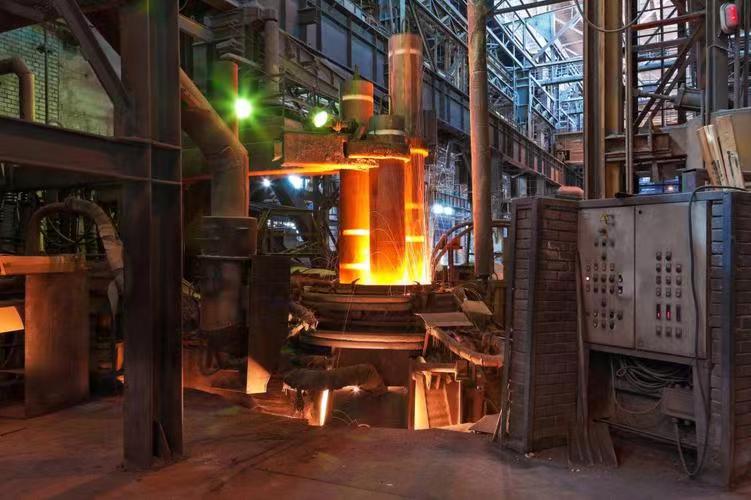Grafit, endüstriyel üretimde ve günlük hayatta çok önemlidir. Farklı grafit türleri farklı yoğunluklara sahiptir ve endüstriyel üretimde anlamlı bir öneme sahip olduğu için grafit yoğunluğunu etkileyen faktörleri, ölçüm yöntemlerini vb. anlamak önemlidir.
İçindekiler
Geçiş
Çeşitli grafit türlerinin yoğunluğu nedir?
Doğal grafit
- Pul grafit: genellikle yaklaşık 2,09 - 2,23 g/cm³.
- Topraksı grafit (mikrokristalin grafit): genellikle yaklaşık 2,0 - 2,2 g/cm³.
Yapay grafit
– İzostatik basınç grafitiYüksek yoğunluğu yaklaşık 1,7 - 1,9 g/cm³'e ulaşır. İzotropik özellikleri nedeniyle izostatik grafit, mukavemet, elektrik iletkenliği ve termal iletkenlik gibi özelliklerini geliştirmeye yardımcı olan özel işlemlerden sonra yüksek bir seviyeye ulaşabilir.
– Kalıplanmış grafit: tipik olarak 1,6 - 1,85 g/cm³ arasında değişir. Yoğunluğu kalıplama basıncı, hammaddeler ve bağlayıcılar gibi faktörlerden etkilenir ve bu aralıktaki yoğunluklar mekanik contalar ve elektrotlar gibi çeşitli uygulama senaryolarının temel gereksinimlerini karşılayabilir.
– Ekstrüde grafit: 1,5 - 1,7 g/cm³ civarındadır. Ekstrüzyon sürecinde, hammaddenin partikül düzeni ve sıkıştırma derecesi nihai yoğunluğu etkileyecektir. Ekstrüde grafit Bu yoğunluk aralığında elektrot malzemeleri ve fırçalar gibi uygulamalarda iyi performans gösterir.
Yoğunluğu etkileyen faktörler
1. Hammaddeler:
Grafit hammaddesinin yapısı nihai ürünlerin yoğunluklarını etkileyebilir. Örneğin, hammaddenin parçacık boyutu, şekli, saflığı vb. grafitin yığın yoğunluğunu ve kristalliğini etkileyecektir.
2. Kalıplama yöntemleri:
Kalıplama, ekstrüzyon, izostatik presleme vb. gibi farklı kalıplama yöntemlerinin bir etkisi olacaktır. Örneğin, izostatik sıkıştırma kalıplama, grafit ürünlerde daha yüksek yoğunluklara ulaşabilir çünkü yöntem, basıncın grafit malzemeye eşit şekilde uygulanmasına izin verir ve böylece iç gözenekliliği azaltır.
3. Sinterleme sıcaklığı ve süresi:
Sinterleme işlemi sırasında, sıcaklık ve zamanın kontrolü önemli bir etkiye sahiptir. Daha yüksek sinterleme sıcaklığı ve uygun bekletme süresi, grafit partiküllerinin kristalleşmesini ve füzyonunu teşvik edebilir, gözenekliliği azaltabilir ve böylece yoğunlukları artırabilir.
4. Gözeneklilik:
Grafitteki gözeneklilik yoğunluğunu doğrudan etkiler. Gözeneklilik ne kadar yüksekse yoğunluk da o kadar düşük olur. Gözeneklerin oluşumu, hammaddenin özellikleri, hazırlama sırasında gazların boşalması ve sinterleme sırasında büzülme gibi faktörlerle ilgili olabilir.
5. Safsızlık içeriği:
Grafit daha fazla safsızlık içeriyorsa, kristal yapısının bütünlüğünü ve kompaktlığını etkileyecek ve yoğunlukta bir azalmaya neden olacaktır.
6. Grafitleşme derecesi:
Grafitleşme derecesi ne kadar yüksek olursa, grafitin kristal yapısı o kadar eksiksiz olur ve yoğunluk da buna bağlı olarak artar.
Grafit yoğunluğunu ölçmek için yöntemler
1. Arşimet prensibi (drenaj yöntemi).
Arşimet prensibine göre, bir cismin sıvı içinde maruz kaldığı kaldırma kuvveti, sıvıdan uzaklaştırdığı ağırlığa eşittir. Grafitin havadaki ağırlığı ve sudaki ağırlığı (kaldırma kuvveti) ölçülerek grafitin hacmi hesaplanabilir. Daha sonra kütlesi ile birleştirilerek sonuç elde edilir.
2. Piknometre yöntemi
Hacmi bilinen bir piknometrenin bir sıvı (su gibi) ile doldurulduğunda kütlesinin ve sıvı doldurulduktan sonra taştıktan sonra kalan kütlenin ölçülmesiyle grafit numunesinin hacmi, dolayısıyla yoğunluğu hesaplanabilir.
3. Doğrudan ölçüm yöntemi (düzenli şekilli grafit numuneler için)
Düzenli şekillere sahip grafit numuneler için (örn. küpler, küboidler, silindirler, vb.), boyut doğrudan ölçülebilir ve hacim hesaplanabilir. Daha sonra yoğunluk kütle ile birlikte hesaplanabilir.
Grafit yoğunluğunun aynı tip karbon malzeme ile karşılaştırılması
Aktif kömür VS Grafit
Aktif karbon bir karbon malzeme oldukça gözenekli bir yapıya sahiptir. Çok sayıda gözenek yapısına sahip olması nedeniyle aktif karbonun yoğunluğu nispeten düşüktür, genellikle 0,5 - 0,9 g/cm³ civarındadır. Buna karşılık grafit, aktif karbondan çok daha yoğundur.
Elmas VS Grafit
Oda sıcaklığı ve basıncında, elmasın yoğunluğu yaklaşık 3,5 - 3,53 g/cm³'tür. Bu nedenle, elmasın yoğunluğu grafitinkinden daha fazladır.
Karbon fiber VS Grafit
Karbon elyafın yoğunluğu genellikle 1,7 ila 2,2 g/cm³ arasındadır, ancak yoğunluğu elyafın türüne ve hazırlama sürecine bağlı olarak değişecektir. Bu nedenle grafit, yoğunluk aralığında karbon elyaf ile kısmen örtüşmektedir.
Karbon nanotüpler VS Grafit
Karbon nanotüpler boru şeklinde bir karbon malzemedir ve yoğunlukları tüp çapı, tüp duvar kalınlığı gibi faktörlere bağlıdır. Tek duvarlı karbon nanotüplerin yoğunluğu yaklaşık 1,3 - 1,4 g/cm³'tür. Grafit, karbon nanotüplerden daha yoğundur.
Endüstriyel üretimde grafit yoğunluğunun önemi
Performans değerlendirmesi: Grafitin yoğunluğu fiziksel özellikleriyle yakından ilişkilidir. Daha yüksek yoğunluk genellikle daha iyi mekanik mukavemet, aşınma direnci anlamına gelir, elektriksel iletkenlik, vb. Grafitin yoğunluğu ölçülerek, belirli bir uygulamadaki performansı önceden değerlendirilebilir ve doğru grafit malzemenin seçilmesi için bir temel sağlanabilir.
Kalite kontrol: Grafit ürünlerin üretim sürecinde yoğunluk önemli bir kalite göstergesidir. Grafit ürünün beklenen yoğunluk aralığına ulaşmasını sağlamak için üretim süreci parametrelerini kontrol ederek, ürünün kalite istikrarı ve tutarlılığı garanti edilebilir. Tatmin edici olmayan yoğunluklara sahip ürünler, performanslarını ve hizmette uzun ömürlülüklerini etkileyebilir.
Sonuç
Özetle, grafitin yoğunluğu mekanik özelliklerinin ve dolayısıyla endüstriyel uygulamalarının önemli bir belirleyicisidir. Potansiyel uygulamalarının çeşitli sektörlere yayılmasıyla, endüstriyel alandaki önemi artmaya devam etmektedir.



